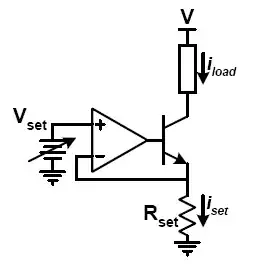If your supply voltage is fixed, the squib's resistance is fixed, and the current through it is fixed at 35 milliamperes, then to get that current all you have to do is connect a resistor between the squib and the supply such that Rt = E/I and subtract the squib's resistance from Rt .
What you'll be left with will be the value of the series resistance which will give you the fixed current you want.
For instance, if you have a 12 volt supply and you want to take 35 milliamperes from it:
$$ Rt = \frac{E}{I} =\frac{12V}{0.035A} = 342.85\Omega $$
Then, since your squib's resistance is 2.3 ohms, the series resistor needs to be :
$$ Rs = Rt - Rsquib =342.85\Omega - 2.3\Omega = 340.56\Omega $$
However, from the data sheet you linked to yesterday, it appears the resistance isn't fixed at 2.3 ohms, but can vary from a low of 1.8 ohms to a high of 2.6 ohms. if such is the case and you want to measure the resistance by passing a constant current through the squib's detonating wire and measuring the voltage drop across it, you'll need a constant current source, like the one @Andy aka posted, which will work.
As an aside, do you know how to select the current sensing resistor and the reference?

